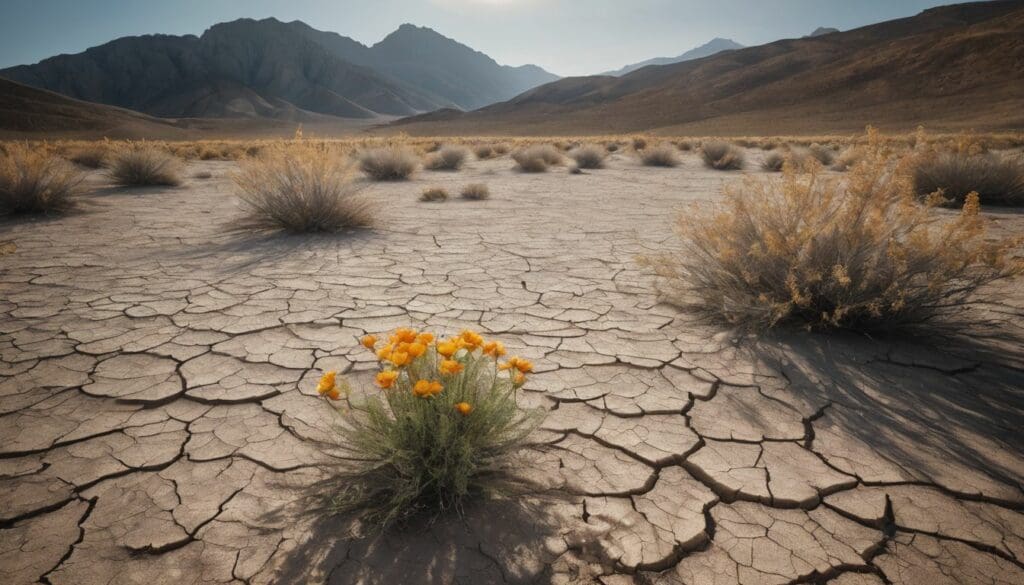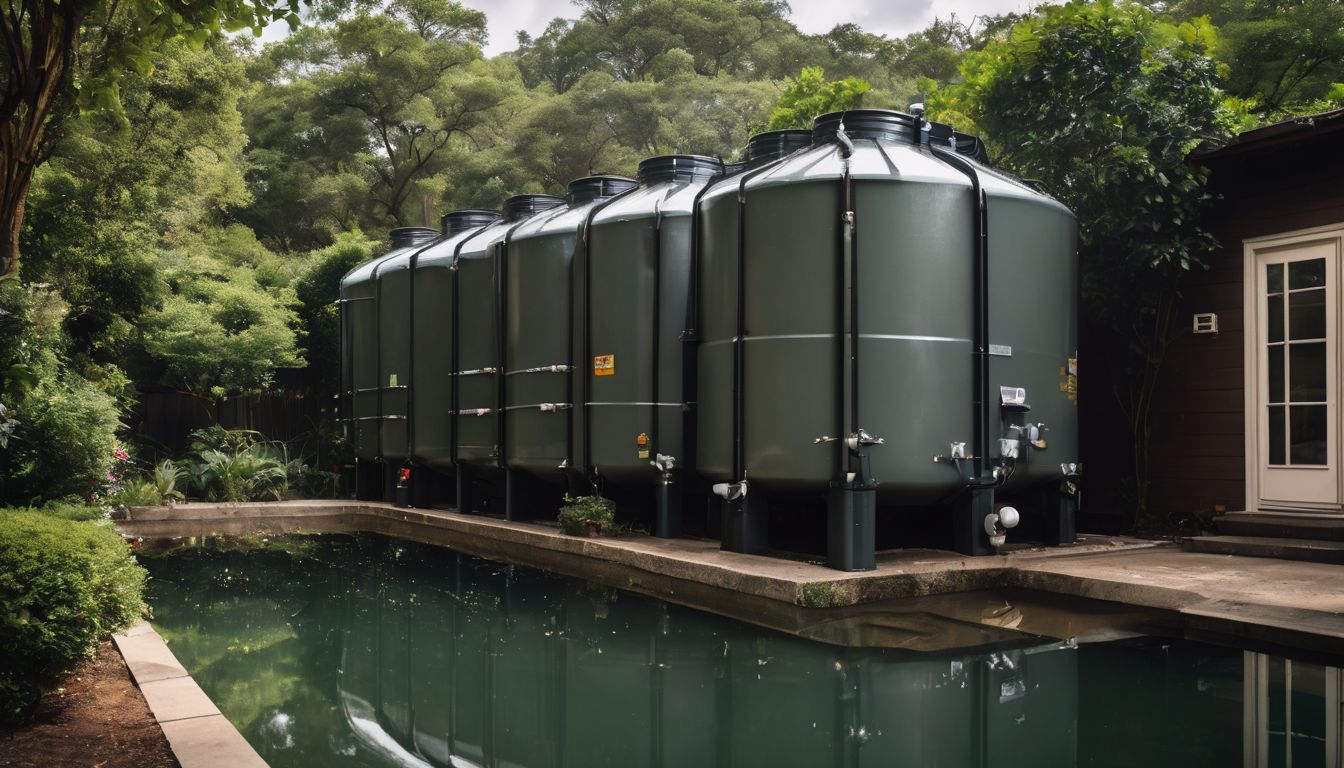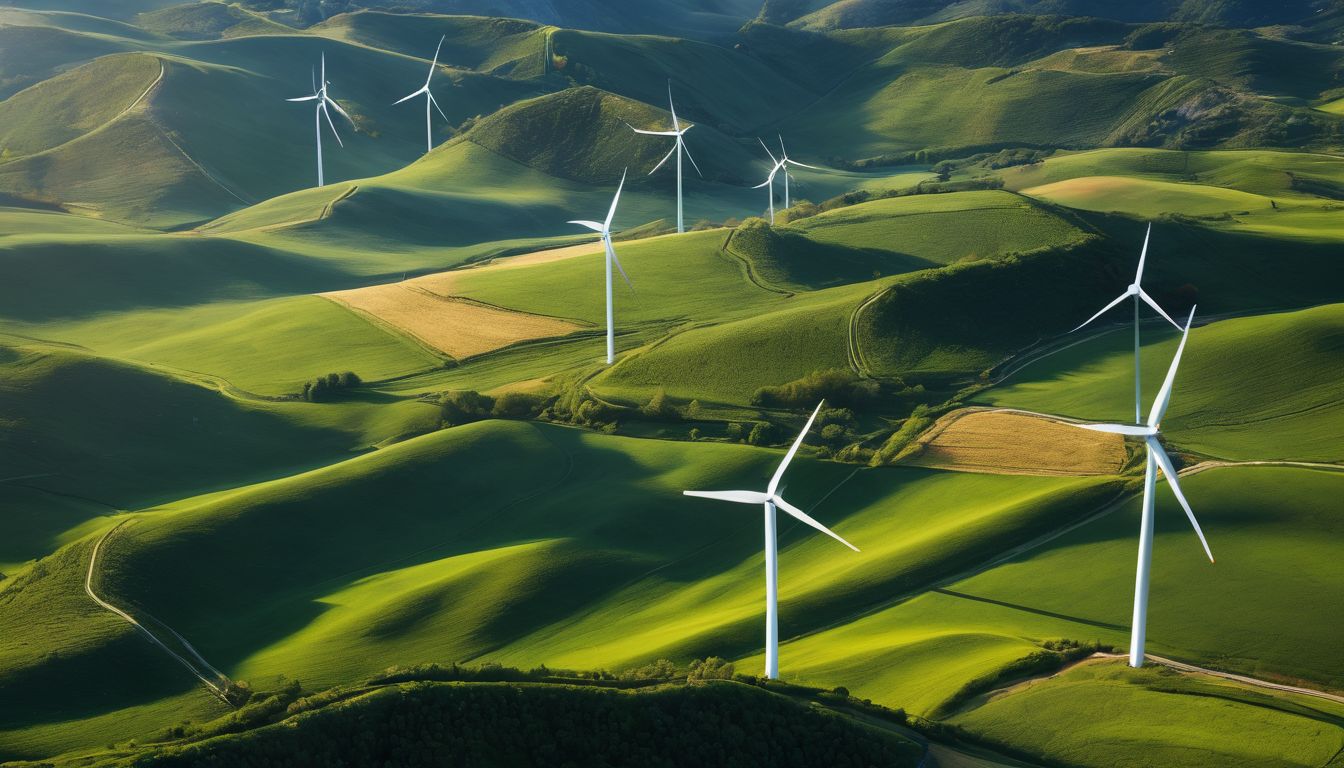Water is precious, yet we often take it for granted. Did you know that less than 3% of Earth’s water is fresh and drinkable? This article will show you how to start a campaign that helps people save water every day.
Let’s make every drop count!
Key Takeaways
- Start a water conservation campaign by understanding the importance of saving freshwater, which makes up less than 3% of Earth’s total water supply.
- Use various communication methods like social media and community events to educate and engage different demographics in water-saving practices.
- Form partnerships with local organisations such as schools and businesses to amplify the message and encourage widespread participation in the campaign.
- Lead by example with practical steps like fixing leaky taps and harvesting rainwater, inspiring others to make positive environmental changes.
- Address potential barriers by educating about the benefits of conservation while seeking support from local authorities for resources and policy changes.
Importance of Water Conservation
Water conservation is crucial for preserving the environment, as well as ensuring socioeconomic stability. With water scarcity and its impact on communities becoming more prevalent, it’s essential to raise awareness about the benefits of reducing water use and promoting conservation methods.
Environmental benefits
Saving water does more than just reduce the strain on our rivers and lakes. It helps maintain the balance of local ecosystems that rely on certain levels of water to thrive. By using less, we ensure animals and plants have enough to survive, supporting biodiversity in our environment.
This also means less energy is required for treating and pumping water, which cuts down carbon emissions significantly.
Conservation initiatives directly contribute to a healthier planet by preventing pollution in nearby waterways. Reducing runoff from over-irrigation stops harmful substances like pesticides from entering streams and rivers, leading to cleaner drinking sources for communities around the world.
Clean water is not just vital for humans; wildlife species depend on uncontaminated supplies for their survival as well. Every drop saved bolsters their chances of flourishing alongside us.
Socioeconomic benefits
Promoting water conservation brings several socioeconomic benefits to communities. By reducing water demand, individuals and businesses can lower their utility costs, thus saving money.
Additionally, conserving water helps to preserve local ecosystems and agricultural resources, contributing to a healthier and more sustainable environment for everyone. Moreover, supporting water conservation initiatives can stimulate economic growth by encouraging the development of innovative technologies and creating job opportunities in the environmental sector.
Encouraging water-saving practices not only leads to financial savings but also fosters a stronger sense of community involvement around environmental issues. Creating public engagement through education and advocacy empowers individuals to take an active role in resource preservation while promoting overall social well-being.
Water scarcity and its impact
Water scarcity poses significant challenges for communities and ecosystems. Reduced water availability impacts agricultural productivity, leading to food shortages and increased prices.
Additionally, industries dependent on water face operational disruptions, affecting local economies and employment opportunities. Moreover, insufficient access to clean water compromises public health, triggering waterborne diseases and escalating healthcare costs.
Consequently, conservation efforts are crucial in mitigating these risks and preserving the delicate balance of the environment.
An inadequate supply of freshwater also exacerbates environmental degradation as ecosystems struggle to cope with reduced streamflows and drying wetlands. This results in habitat loss for wildlife and threatens biodiversity.
Conducting a Water Awareness Campaign
Understanding the target audience is essential for crafting effective communication methods and partnering with local organisations. These steps are crucial in reaching a wider audience and creating a meaningful impact in water conservation efforts.
Understanding the target audience
To create an impactful water conservation awareness campaign, it is crucial to understand the target audience. Engaging environmentally conscious individuals who support conservation and are passionate about environmental sustainability is key.
By tailoring the messaging and activities to resonate with this group’s values and beliefs, the campaign can effectively motivate them to participate and advocate for water conservation initiatives.
Identifying their specific interests and concerns related to water management will enable the campaign to address their needs more directly, ultimately leading to higher engagement and support.
Choosing effective communication methods that appeal to this audience should be a priority as well. Utilising keywords such as “environmental benefits of water conservation” and “promoting water-saving methods” in outreach efforts will ensure that the message resonates with those who are already invested in environmental causes.
Additionally, leveraging social media platforms, community outreach events, or public awareness programmes for water conservation can help reach these individuals where they are most active.
Choosing effective communication methods
To engage the target audience effectively, the campaign will utilise a mix of communication methods such as social media, local community events, and educational workshops. These approaches are chosen for their ability to reach different demographics and provide opportunities for interactive engagement in promoting water conservation.
By tailoring messages to resonate with diverse groups within the community, the campaign aims to maximise its impact and foster a sense of shared responsibility towards preserving this vital resource.
In addition to traditional outreach methods, innovative digital platforms will be leveraged to connect with tech-savvy individuals through engaging content like informative videos and interactive webinars.
Partnering with local organisations
Collaborating with local organisations is essential for the success of the water conservation campaign. By teaming up with community groups, schools, and businesses, we can broaden our reach and impact.
Local partnerships also provide valuable resources and support to execute various initiatives such as organising educational workshops, distributing informational materials, and hosting fundraising events.
Engaging in collaborative efforts with local organisations creates a unified front in promoting water-saving methods and environmental awareness. Such partnerships enable us to tap into existing networks and leverage their expertise to maximise the effectiveness of our public awareness programs for water conservation.
Implementation of the Campaign
Lead by example by demonstrating water-saving practices, educate others about the importance of conservation, and collaborate with local organisations to widen the campaign’s reach.
To learn more about how to effectively implement a water conservation awareness campaign, continue reading!
Lead by example
Demonstrate water conservation practices in your daily life. Use water-saving methods such as fixing leaky taps and using a bucket to wash your car instead of a hose. Share your efforts on social media, encouraging others to follow suit.
By leading by example, you inspire those around you to adopt similar habits and make a positive impact on the environment.
Encourage friends, family, and colleagues to join in your efforts. Organise community clean-up events or host workshops on water-saving techniques. By actively involving others in conservation activities, you amplify the campaign’s reach and impact within the community.
Educating others and promoting conservation methods
To promote water conservation, educate others about the importance of saving water and support them in adopting conservation methods.
- Spread awareness about the environmental and socio – economic benefits of water conservation through educational materials such as leaflets, posters, and online resources.
- Organise workshops and training sessions to demonstrate practical water – saving techniques like rainwater harvesting, efficient irrigation methods, and leak detection.
- Encourage behavioural change by providing incentives for participating in water-saving challenges and promoting the use of water-efficient appliances.
- Collaborate with local schools and community groups to integrate water conservation education into their curriculum and activities.
- Engage with local businesses to advocate for sustainable practices and provide guidance on reducing water wastage in their operations.
Widening the campaign’s reach
To widen the campaign’s reach, consider collaborating with influential social media personalities who can help spread the message to a wider audience. Engaging local businesses and community groups in supporting and promoting the campaign can enhance its visibility and impact. Additionally, organising public events such as workshops, seminars, or outdoor activities aimed at promoting water-saving practices can attract more participants. Encouraging schools and educational institutions to incorporate water conservation awareness into their curriculum can also extend the reach of the campaign. Moreover, leveraging partnerships with municipal authorities and environmental organisations can further amplify the campaign’s influence within the community.
Potential Barriers and Opportunities
While raising awareness about water conservation, it’s important to consider potential barriers such as resistance to change and lack of resources. On the other hand, there are opportunities for collaboration with local authorities and organisations to support and amplify the impact of the campaign.
Awareness and behaviour change
Raising awareness about water conservation encourages positive behaviour change. Educating individuals empowers them to understand and appreciate the value of water, leading to conscious efforts in promoting water-saving methods within their communities.
Promoting active participation in campaigns for promoting water conservation will drive impactful change at a local level, ultimately contributing to broader environmental and socioeconomic benefits.
Resources and support from local authorities
Having successfully navigated through the challenges of raising awareness and promoting behaviour change, the next step involves harnessing resources and support from local authorities.
This pivotal stage will require engaging with government bodies, securing funding, accessing relevant data sets, and collaborating on outreach efforts. Forming strategic partnerships with local councils and agencies can provide access to crucial resources such as venues for events, promotional materials, or expertise in running community programmes.
Furthermore, building alliances with decision-makers can help leverage political backing for your water conservation campaign.
In addition to tapping into existing infrastructures and networks established by local authorities, it is important to advocate for policy changes that incentivise water-saving practices at a systemic level.
Lobbying for rebates or subsidies for water-efficient devices and infrastructure upgrades could make a substantial impact on encouraging individuals to adopt conservation methods within their own homes or businesses.
Conclusion
In conclusion, organising a water conservation awareness campaign involves understanding the target audience and choosing effective communication methods. Partnering with local organisations can help widen the campaign’s reach.
Educating others and promoting conservation methods will lead by example and encourage water conservation. Overcoming potential barriers through raising awareness and behaviour change is crucial for successful implementation of the campaign.
Ultimately, promoting water-saving methods benefits the environment and society as a whole.
FAQs
1. How do I start a water conservation awareness campaign?
Begin by educating about water conservation and promoting water-saving methods through various activities like workshops or distributing informational materials.
2. Can organising a fundraiser help my campaign?
Yes, fundraisers can provide the necessary funds to support your efforts and also raise public awareness about the environmental benefits of conserving water.
3. What are some ways to promote water conservation in my community?
You can encourage local businesses and schools to adopt more efficient use of water, host events that focus on watershed protection, and share tips on reducing personal water usage.
4. Why should we conserve water?
Conserveing Water has both environmental and socioeconomic impacts; it helps keep our ecosystems healthy and ensures there is enough clean water for everyone’s needs now and in the future.





